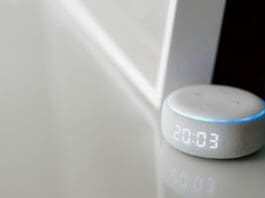This post is also available in:
 עברית (Hebrew)
עברית (Hebrew)
There are some situations in life in which timing and proper response rate are key, and needing a defibrillator is one of them.
Researchers from Karolinska Institutet have been investigating the idea of sending drones equipped with automated external defibrillators (AEDs) to patients in cardiac arrest instead of ambulances. They found that in most cases the drones were faster than the vehicles, and in the majority of cases where the patient was in cardiac arrest, the drone-delivered defibrillator was employed to stop the condition from getting worse or leading to death.
Andreas Claesson, Associate Professor at the Center for Cardiac Arrest Research and principal investigator of the study said: “The use of an AED is the single most important factor in saving lives. We have been deploying drones equipped with AED since the summer of 2020 and show in this follow-up study that drones can arrive at the scene before an ambulance by several minutes. This lead time has meant that the AED could be used by people at the scene in several cases.”
According to Interesting Engineering, cardiac arrest is a potentially fatal medical condition in which the heart suddenly stops beating (can occur as a result of a heart attack, arrhythmias, or other cardiac disorders), and immediate intervention is required to preserve a person’s life.
One of the most important interventions in cardiac arrest is the usage of defibrillators- a medical procedure in which a therapeutic dose of electrical energy is delivered to the heart with the goal of restoring normal cardiac rhythm. therefore, getting them to the locations where cardiac arrests are happening is crucial.
Karolinska Institutet has been testing the idea of sending out a drone with an AED at the same time as an ambulance to reduce the time to defibrillation since 2020, and the first outcomes revealed that the concept was viable and safe. Drones were used to deliver AEDs in 55 cases of suspected cardiac arrest in the research study, and in 37 cases the delivery occurred before an ambulance (67 percent).




